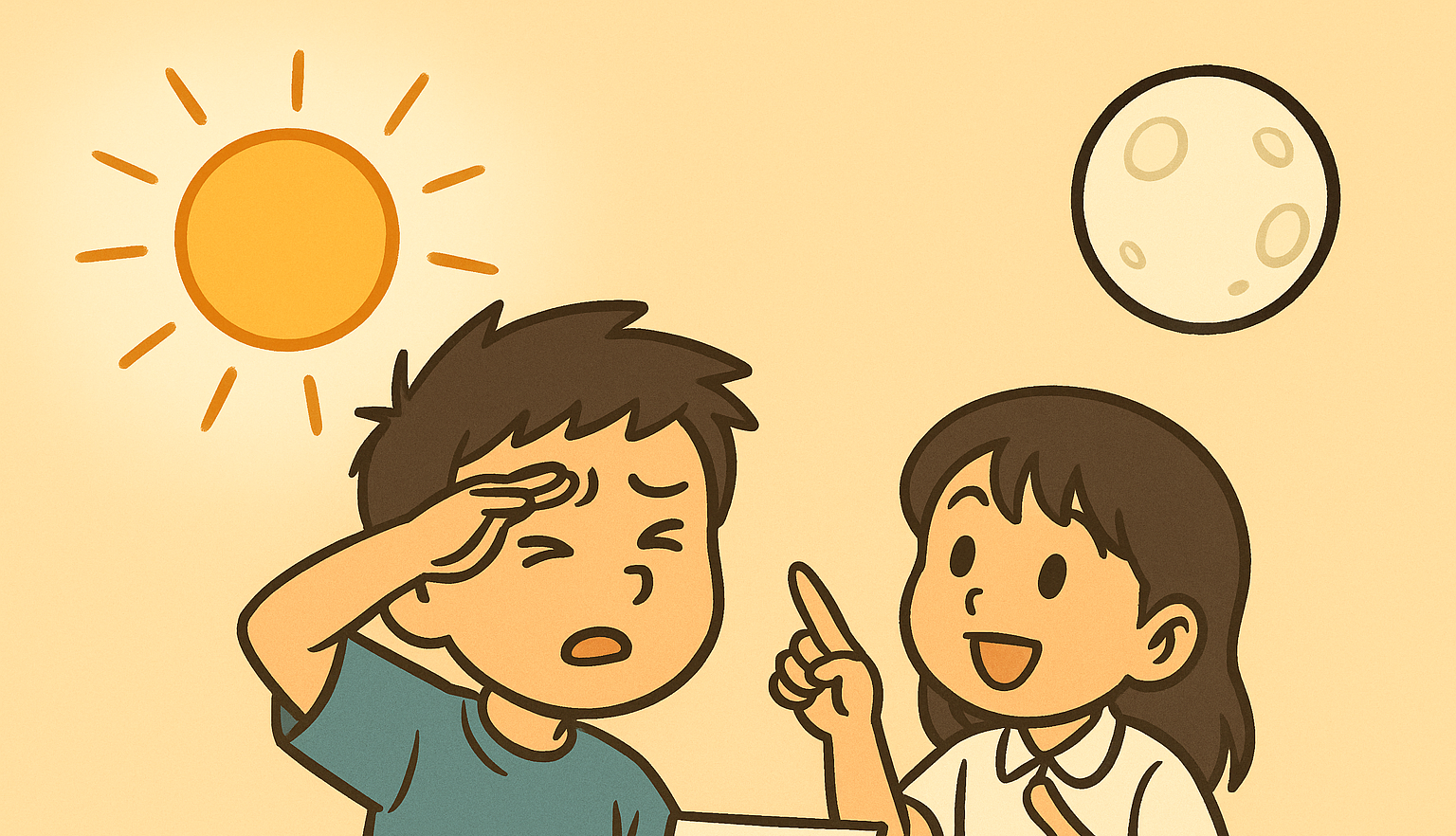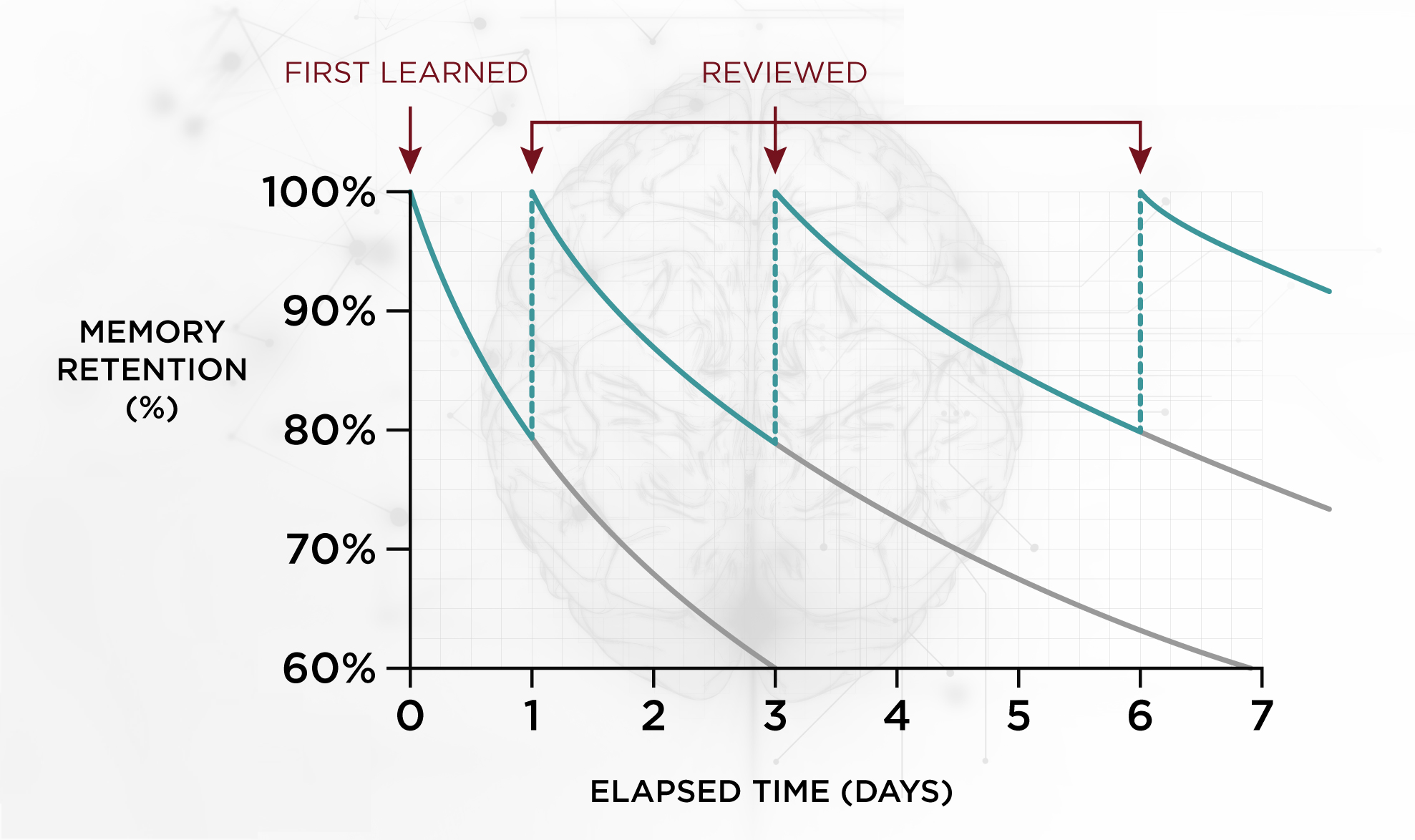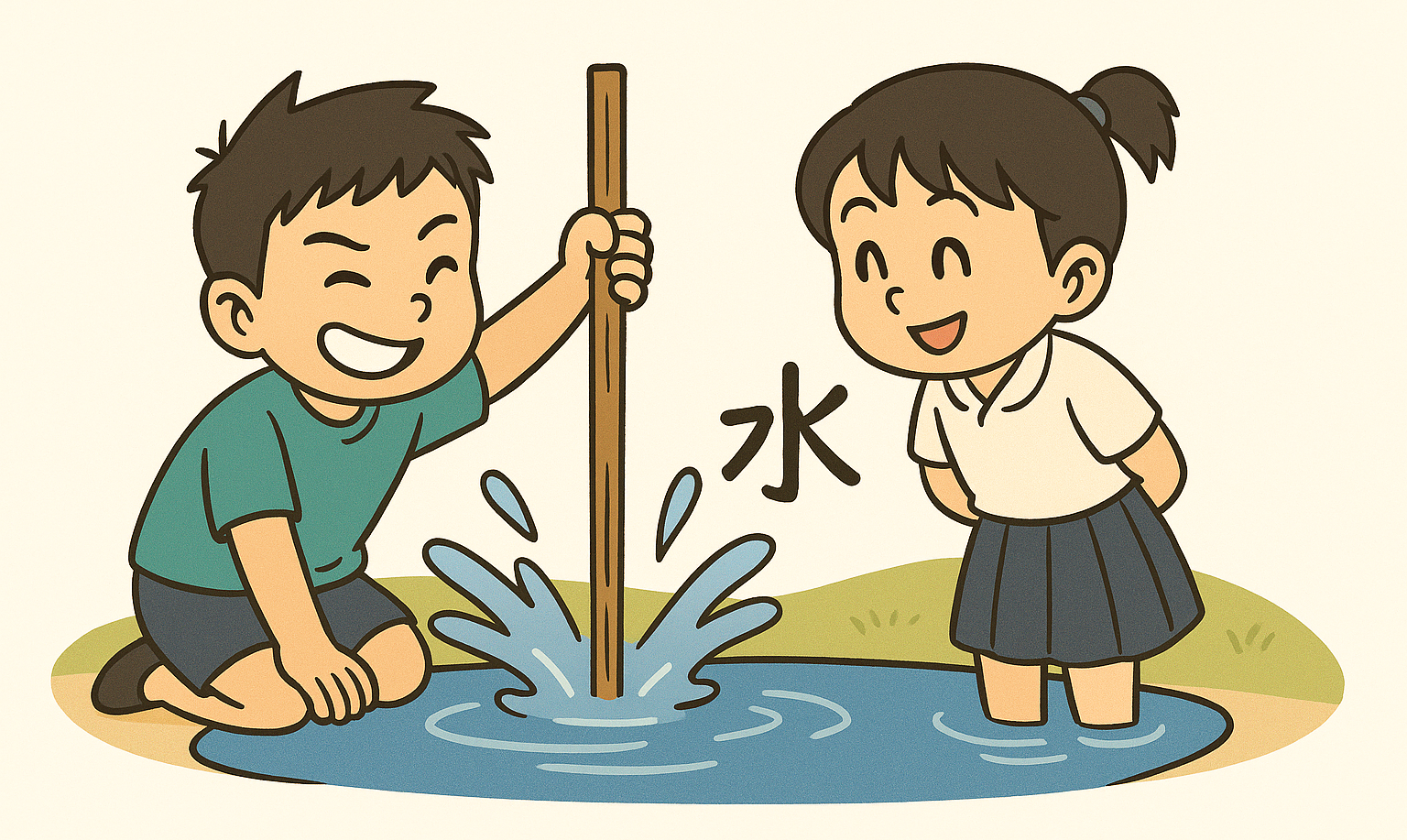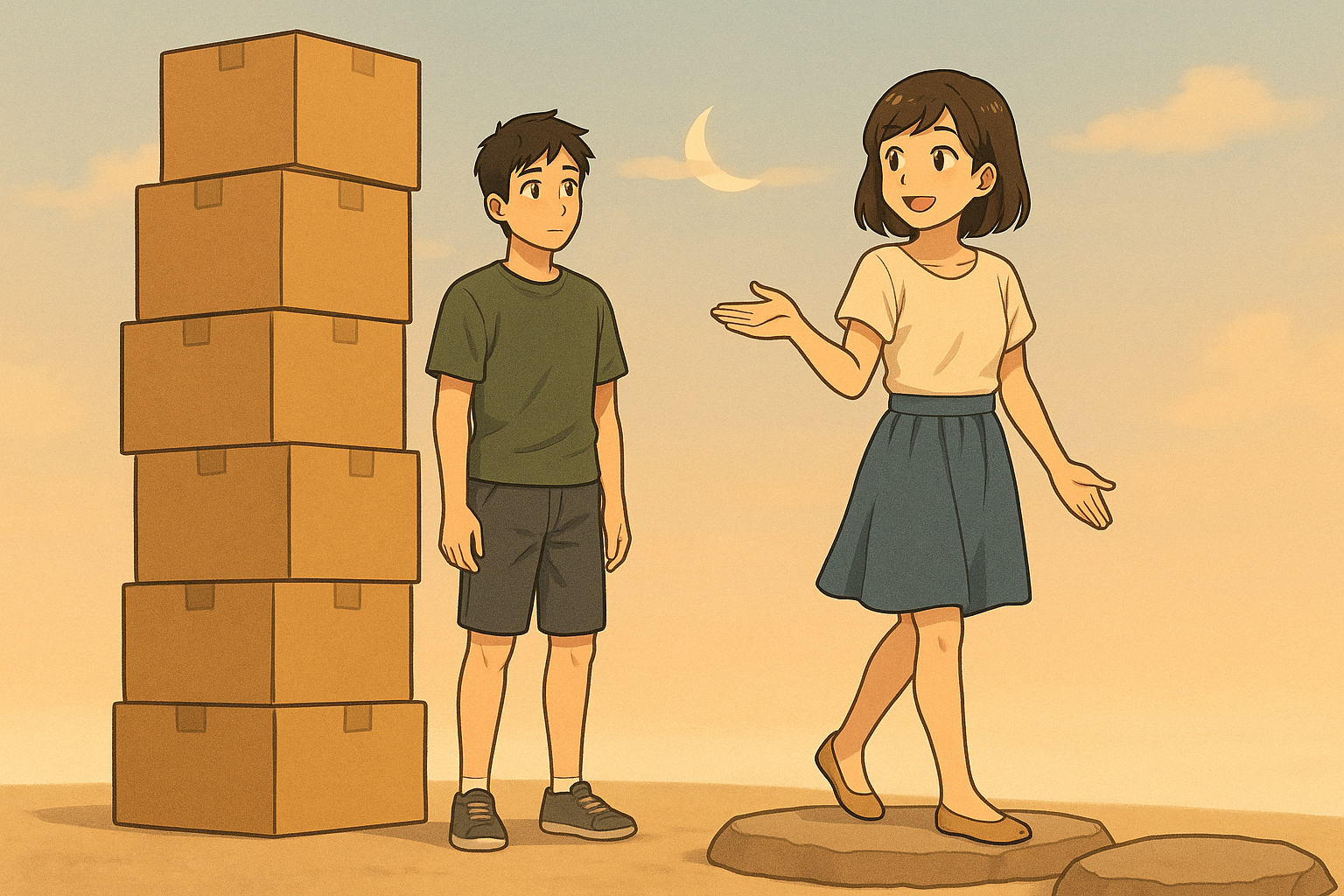What is Spaced Repetition (SRS)?
The Memory Hack Every Kanji Learner Needs

Ever feel like kanji just vanish from your memory after a few days?
Spaced Repetition (SRS) is the secret weapon to make those memories stick.
🧠 The Forgetting Curve—And How SRS Fixes It
If you don’t review, your memory drops off fast.

We all forget new things quickly—that’s just how our brains work! But there’s good news: every time you review *right before* you forget, the memory gets stronger, and you’ll remember it longer each time.
📅 What *is* Spaced Repetition?
SRS = reviewing at smart intervals. Instead of cramming all at once, you see each kanji just as you’re about to forget it.
- Right after you learn it: review today
- If you remember it: review in 2 days
- If you remember again: review in 5 days
- If you keep getting it right: review a week later, then a month later...
Each review “resets” your memory clock and makes the memory stronger.

🌱 Example: The Tale of Card 7

On Day 1, you learn the kanji for water—水.
You remember it easily, so you review again in two days. Still easy! You decided you didn't need to review that one.
Suddenly, you forget—was it “water” or “tree”? You mark it wrong. Now SRS kicks in: you’ll see it again tomorrow, not a week from now.
Once it’s easy again, the intervals get longer: 10 days, 30 days, 3 months...
This way, you spend more time on what’s hard, and almost none on what’s easy!
🛠️ How Do I Use SRS?
Anki is a digital flashcard app—perfect for memorizing kanji, vocabulary, grammar, and more. It uses the same Spaced Repetition System (SRS) technology we've been talking about in this article. It's free to use and offers a powerful way to boost long-term retention.
If you've never heard of Anki or used flashcards before, don’t worry—Anki isn't required. But if you're ready to level up your learning, here’s how to ease into it:
- Start simple — use our downloadable 5-day review grid to track what you've learned each week.
- Only add what challenges you — instead of turning everything into a flashcard, focus on kanji you consistently forget. This avoids “deck bloat” and keeps daily reviews light.
Here’s how to begin with Anki:
- Download Anki (we recommend the desktop version just for initial setup).
- Import one of our decks after you just finished a chapter.
- Review a few cards daily, especially the tricky ones.
- As you recognize information effortlessly, suspend (not delete) easy cards so your review queue stays meaningful.
Remember: the goal isn't endless repetition—it’s smart repetition. Use SRS to target what you’re about to forget, while enjoying real-world exposure through reading, listening, and usage.
🧩 Avoiding SRS Overload: Review Smarter, Not Longer

If you add *every* word or kanji to Anki, your daily reviews will explode. That’s called “card bloat”—and it can burn out even the most dedicated learners.
- Option 1: Test yourself first with our printable review sheet or a spreadsheet. Only add the kanji you miss more than once or twice.
- Option 2: Add everything, then prune (suspend cards you never got wrong after five reviews). This approach is more advanced and hands onーit's easy to forget to "prune"!
Remember: Your brain is always reviewing in the background—real exposure, reading, and listening are the ultimate SRS.
📈 Pro Tips for Anki & SRS
- Review your hardest kanji more often—that’s what SRS is for.
- Suspend (don’t delete!) easy cards so you always have a record of what you’ve studied.
- Take breaks from reviewing—don’t let SRS control your life.
- Learn and understand firstー then review with SRS.
✨ TL;DR—Why SRS?
- We forget fast. SRS helps us remember *longer*.
- Review at the *right* time, not all the time.
- Use SRS for *tricky* kanji, not the easy ones.
- Review smarter, not more!
Ready to stop reading about kanji—and start learning them?
If you’d like more personalized guidance alongside your SRS practice, check out our Tutoring Page.
You can read more about Rowan's learning journey and philosophy on our About page.